Put your stash of Maggi Magic Masala seasoning packets away because this vegetarian Hakka Noodles recipe doesn’t need help in the flavour department.
Has anyone ever been out for Indo-Chinese food and not ordered Hakka Noodles?
I could be mistaken, but I’m 83% sure it’s international law that you order at least one portion.
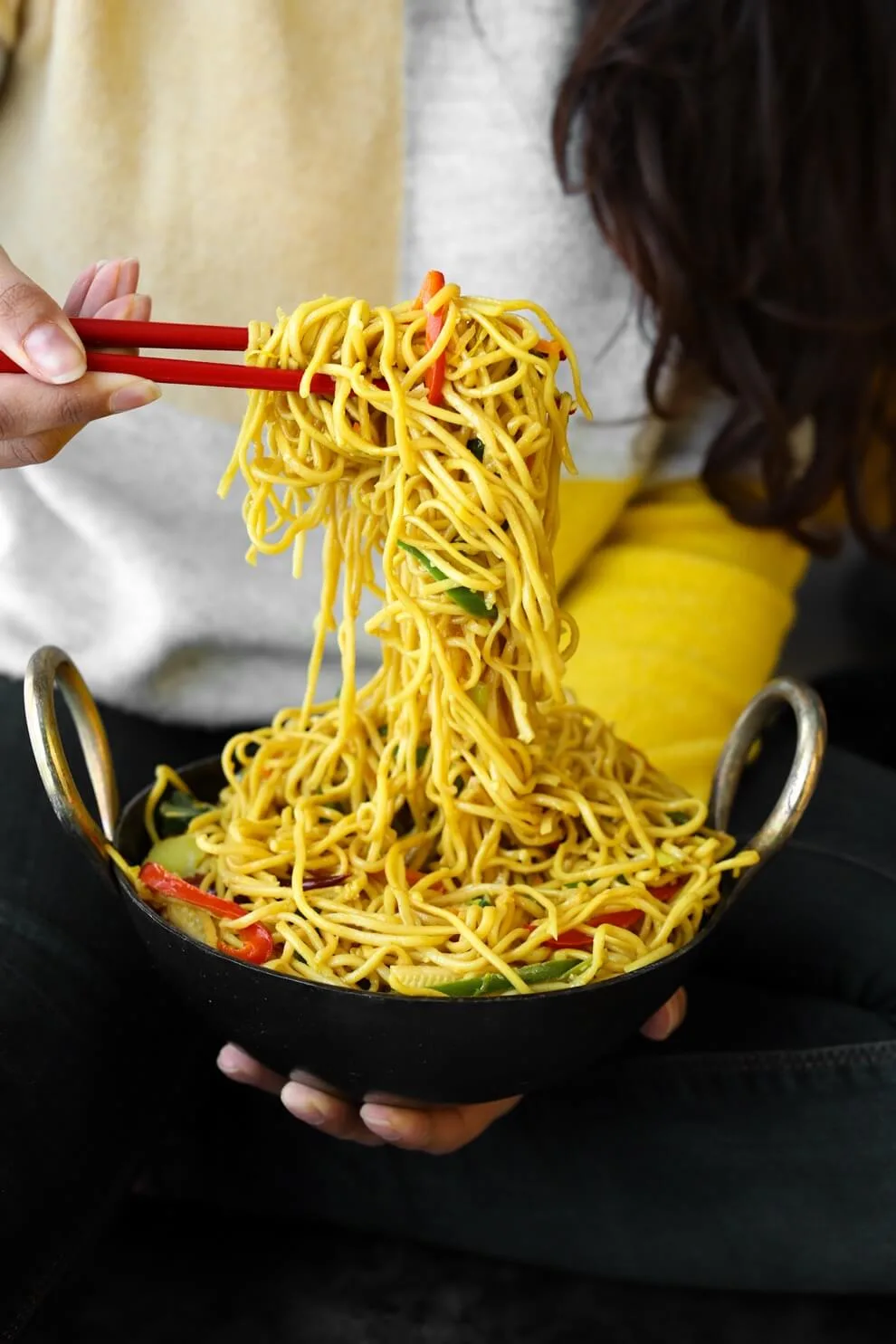
What is Indo-Chinese food?
Indo-Chinese cuisine is a treasured part of India’s food culture.
The Chinese immigrant community in India began centuries ago, and many settlers lay down new roots around the ports of Kolkata and Madras.
The vibrant and flavoursome cooking of India’s Chinese communities has carved a place in all our appetites.
Indo-Chinese favourite dishes
In Indo-Chinese cooking, the techniques of Chinese cooking meet Indian flavours (and vice versa), to create fresh, exciting dishes.
The fiery heat of Chilli Paneer, offset by the tang of Gobi Manchurian or the mild, carby goodness of Burnt Garlic Fried Rice and Hakka Noodles.
It’s flavour-rich comfort food that’s fast and filling.
It’s not uncommon to spot Schezwan Dosas (that usually contain no Sichuan peppercorns), Manchow Soup, Honey-Chilli Potatoes and Chow Mein Samosas on Indian restaurant menus everywhere.
Who decides what is authentic?
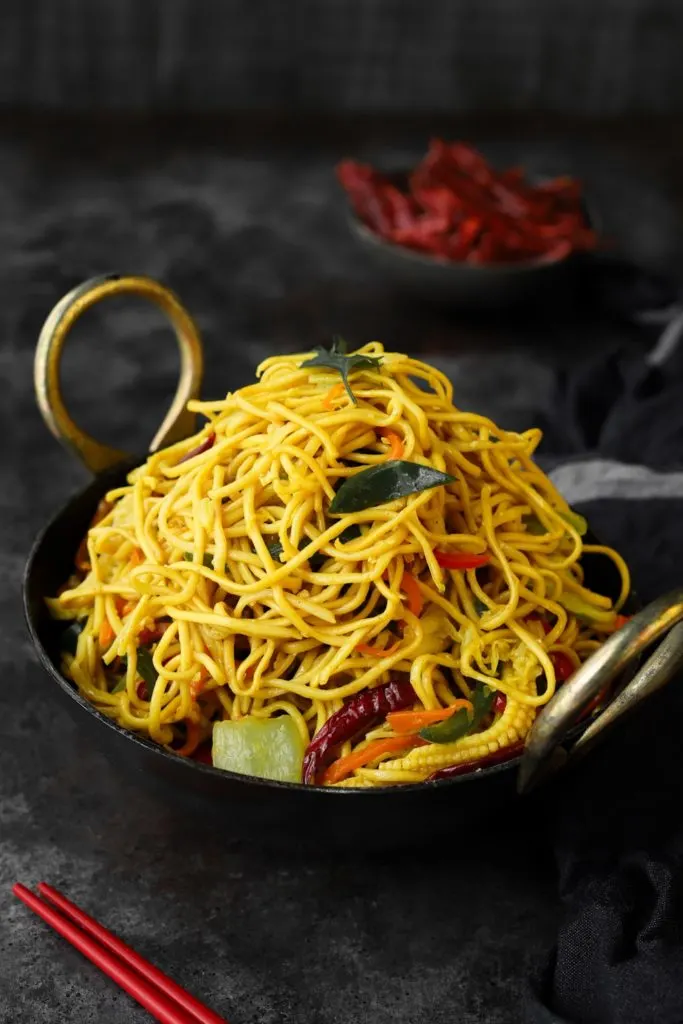
The world of Indo-Chinese food is vast, rich and may seem utterly inauthentic to many people. But really, who cares about “authenticity” when the food tastes this good?
Indo Chinese food around the world
While Indo-Chinese is an integral part of India’s culinary scene, it’s also made its way around the world and is loved among Indian communities outside of India too.
It’s a popular street food choice, as well as a restaurant favourite.
Many Indian restaurants today even have separate menus for their Indo-Chinese dishes.

In the UK, Chilli Mogo (or Indo-Chinese chilli cassava) is a very popular dish.
It has come to be loved by many and is a product of those who have roots in both India and East Africa (where cassava is a staple carbohydrate).
Food travels with us
It is the beautiful evolution of cuisine through physical migration and cultural shifts; Food without borders.
How do I make Vegetarian Hakka Noodles?
My recipe for Vegetarian Hakka Noodles is has remained the same for years. It’s one of those timeless dishes you can count on when the contents of the fridge looks sparse and you’re short of time. Have it on the table in under 30 minutes and use whatever veggies you have to hand. I usually have carrots, cabbage, peppers and spring onions.
How to serve Hakka Noodles
Hakka Noodles are an any time, any place noodle affair.
This vegetarian version makes for a delicious lunch or dinner.
Serve them with other Indo-Chinese favourites such as Chilli Paneer or Vegetable Manchurian, or simply as they are.
30-minute Vegetarian Hakka Noodles
These Vegetarian Hakka Noodles are the ultimate quick meal.
I often serve Vegetarian Hakka Noodles alongside some pan-fried tofu or tofu puffs for added protein.
However, you could always throw in some soy mince, seitan or tempeh.
Thin, wheat flour noodles are the most common choice but this recipe works well with any type of noodle. Try it with rice noodles or mung bean noodles for a lighter, gluten-free version.
Cook them according to package instructions but reduce cooking time by 2 minutes. I like to add turmeric to the water for colour but you don’t have to. I do not add salt to the water in this case as I wash the noodles later. The noodles should be about 80% cooked and a little firm to the bite. Once boiled, quickly drain the noodles in a colander and rinse them well under cold water. This washes away excess starch that causes noodles to stick together as they cool.
I like to julienne the veggies for this dish, so they are long and thin, just like the noodles. Ensure they are all cut to a similar size so that everything cooks together, time wise.
A wok is the best pan for this dish (cast iron, to be specific) but you can use any type of pan. Ensure it is smoking hot and all your ingredients are ready before you start cooking. This dish will come together in around 5 minutes (wok time, noodle cooking is separate). It’s the high heat over a well-seasoned cast iron wok that gives Chinese dishes their signature smoky flavour/aroma. This is called “wok hei” which translates to “breath of the wok”.
Ingredients: What you need to make Vegetarian Hakka Noodles
Find all the measurements in the recipe card below
- Thin wheat flour noodles (these are the most commonly-used variety for this dish but any noodles will work).
- Water
- Turmeric – for great colour
- Any oil with a high smoke point (e.g. rapeseed, sunflower, vegetable)
- Carrots
- Peppers (capsicum/bell peppers)
- Chinese leaf cabbage or any other white cabbage
- Bok choy
- Babycorn
- Garlic
- Dried red chillies (or fresh chillies/chilli flakes)
- Light soy sauce
- Rice vinegar (or any white vinegar)
- Ground white pepper
- Sugar
- Salt
- MSG (optional)
Step-by-step for making Hakka Noodles
1. Cook the noodles
Bring a large pan or wok filled with plenty of water to the boil. Add the salt and turmeric. Boil the noodles according to package directions, reducing the cook time by two minutes.
The noodles should be 80% cooked.
They will appear red but the colour will change once stir-fried. Drain the noodles and wash them under cold running water to remove excess starch so they don’t stick together.
Add 2 tsp oil and toss to coat all the noodles well.
2. Stir fry the aromatics and vegetables
Heat up a large wok or pan. Once smoking hot, add the oil, garlic, dried chillies, spring onion (white parts only), and peppers. Stir fry for 30-40 seconds and then add the carrot, cabbage, baby corn and bok choy in rapid succession.
Stir fry for 1 minute and then add the soy sauce, vinegar, white pepper, sugar, salt and MSG (if using). Toss to combine.
3. Add the noodles
Quickly add the cooked noodles and stir fry or toss to coat them well in the vegetables and light sauce.
You will notice the colour of the noodles changes almost immediately. It will go from a reddish orange to egg yellow.
This is due to the vinegar and the heat of the wok. Stir fry for no longer than 1 minute and then serve, garnished with the spring onion greens.
How to make Vegetarian Hakka Noodles | Hakka Noodles Recipe
Vegetarian Hakka Noodles
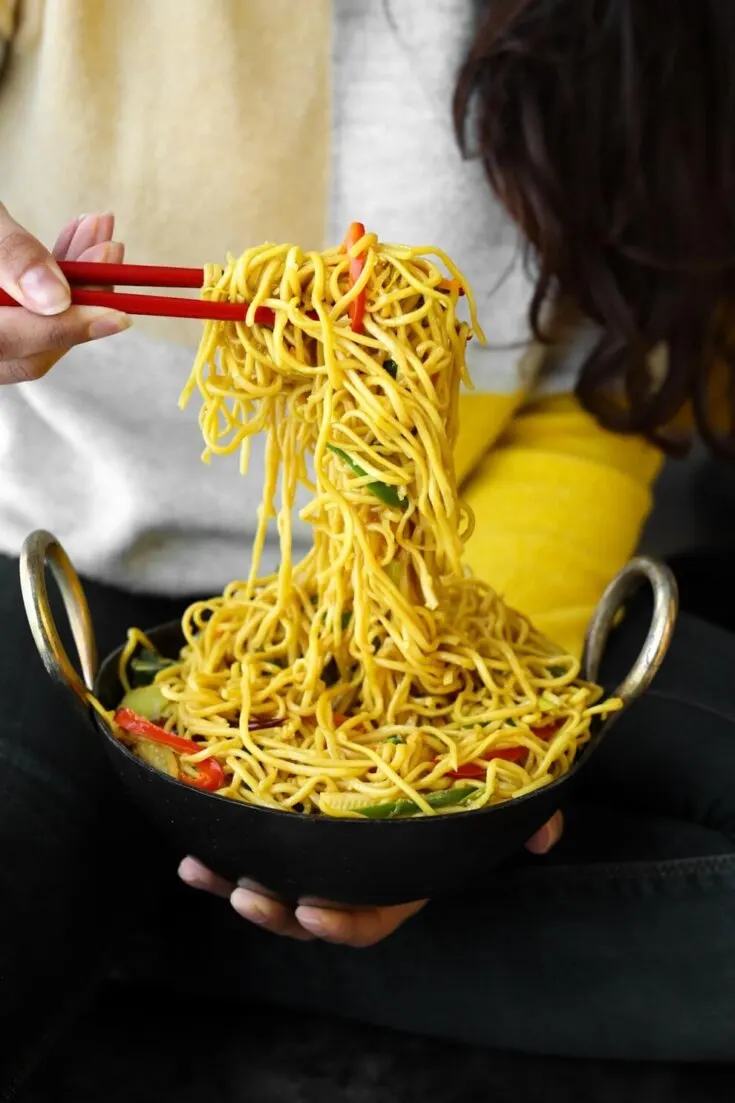
Hakka Noodles are an any time, any place noodle affair. This vegetarian version makes for a delicious lunch or dinner. Serve them with other Indo-Chinese favourites such as Chilli Paneer or Gobi Manchurian, or simply as they are. These Vegetarian Hakka Noodles are the ultimate quick meal.
Ingredients
For the noodles:
- 250 g dried thin wheat flour noodles, (or any noodles of your choice)
- 1/2 tsp turmeric
- 2 tsp oil
For stir frying:
- 1 tbsp oil, (sunflower, vegetable, peanut, canola or rapeseed are ideal)
- 1 carrot, julienned
- 2 peppers, julienned
- 80 g Chinese cabbage or white cabbage, finely shredded
- 1 bulb bok choy
- 6 spring onions, finely chopped, white and green parts divided
- 50 g baby corn, quartered lengthways
- 4 large cloves garlic, crushed
- 3-4 dried red chillies, or to taste
- 2 tbsp light soy sauce
- 2 tsp white vinegar
- 1/4 tsp ground white pepper
- 1/2 tsp sugar
- 1/4 tsp salt
- 1/4 tsp MSG, (optional)
Instructions
- Bring a large pan or wok filled with plenty of water to the boil. Add the salt and turmeric. Boil the noodles according to package directions, reducing the cook time by two minutes. The noodles should be 80% cooked. They will appear red but the colour will change once stir-fried. Drain the noodles and wash them under cold running water to remove excess starch so they don't stick together. Add 2 tsp oil and toss to coat all the noodles well.
- Heat up a large wok or pan. Once smoking hot, add the oil, garlic, dried chillies, spring onion (white parts only), and peppers. Stir fry for 30-40 seconds and then add the carrot, cabbage, baby corn and bok choy in rapid succession. Stir fry for 1 minute and then add the soy sauce, vinegar, white pepper, sugar, salt and MSG (if using). Stir to combine.
- Quickly add the cooked noodles and stir fry or toss to coat them well in the vegetables and light sauce. You will notice the colour of the noodles changes almost immediately. It will go from a reddish orange to egg yellow. This is due to the vinegar and the heat of the wok. Stir fry for no longer than 1 minute and then serve, garnished with the spring onion greens.
Notes
- Store leftovers in an airtight container in the fridge. Eat within 2 days.
- Serve with your favourite Indo-Chinese dishes.
Nutrition Information:
Yield: 4 Serving Size: 1 gramsAmount Per Serving: Unsaturated Fat: 0g
Do Hakka Noodles have MSG?
Sometimes, if I’m craving something deeply savoury. I won’t go into the health or political debates around using MSG except to say that it’s a personal decision. This recipe is delicious both with and without MSG. David Chang has some interesting thoughts on the subject of MSG.
Pin Vegetarian Hakka Noodles for later!
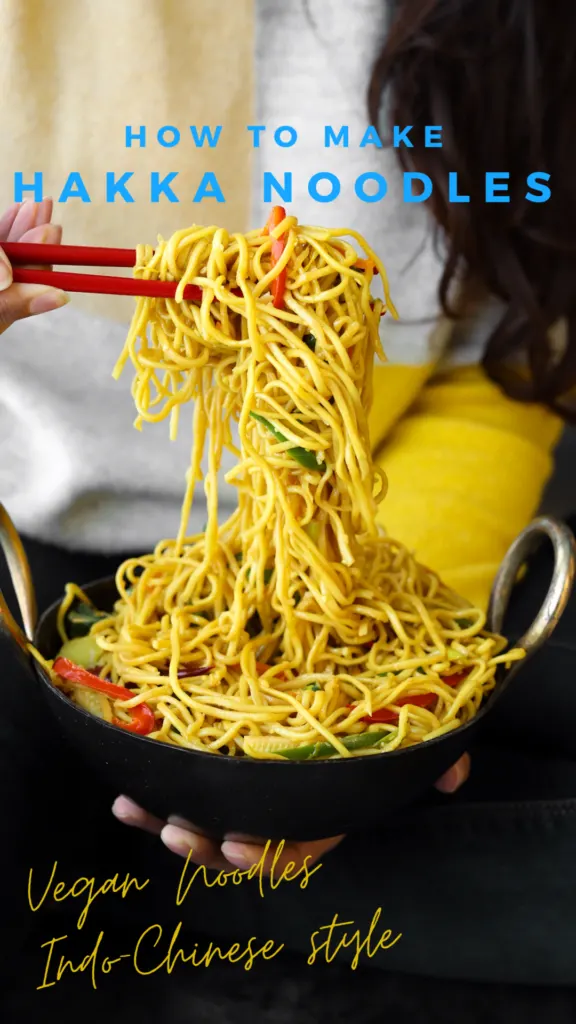
If you like this, you’ll love my Chilli Paneer recipe
More delicious Indo-Chinese Recipes
12 Indo-Chinese Recipes with Big Flavor
Try one of these delicious Indo-Chinese recipes tonight. The flavours of India and China come together in a blended fusion cuisine that's big on flavor. These Indo-Chinese recipes are vegetarian, easy and make perfect appetizers or side dishes on weeknights and for special occasions. You must try my famous Chilli Paneer and Hakka Noodles combo!
Crispy paneer cubes wok-fried in a chilli and garlic sauce with crunchy peppers and onions. A real Indo-Chinese crowd pleaser and Indian restaurant favourite. This dish is perfect as an appetizer, or as part of a larger meal with rice or noodles.
Crispy Chilli Oil Aubergine is a fragrant chilli crisp stir fry with tempura aubergines and homemade chilli oil. This Indo-Chinese dish is a flavour explosion, so serve it with plain, steamed Jasmine rice or noodles. It’s delicious as a starter, main or alongside other dishes.
Flavour bomb incoming! For the ultimate Vegetable Manchurian, I toss crispy vegetable dumplings in a hot and garlicky Indo-Chinese sauce. It’s fiery, loaded with flavour and gives your favourite Asian restaurant a run for its’ money.
I couldn’t be more excited to share my little creation of Vegan Air Fryer Sesame Mogo Toasts with you. A lighter, vegan take Chinese restaurant favourite, sesame prawn toast using spiced cassava (mogo) to replace the shrimp.
American Chinese takeout favourite General Tso’s Chicken gets a vegetarian makeover with this Desi Chinese-inspired fresh stir-fry dish, General Tso’s Paneer. Crisp-coated creamy paneer nuggets tossed in a sticky spicy, sweet and sour sauce.
Hakka Noodles are an any time, any place noodle affair. This vegetarian version makes for a delicious lunch or dinner. Serve them with other Indo-Chinese favourites such as Chilli Paneer or Gobi Manchurian, or simply as they are. These Vegetarian Hakka Noodles are the ultimate quick meal.
I first fell in love with the spongy, cloud-like morsels that are Taiwanese folded buns when I sampled them from popular London street vendors, Yum Bun. After hearing all the Momofuku hype, these little burger-like buns had finally reached the streets of Britain. My first folded bun was filled with juicy Portabello mushrooms and crunchy, miso-glazed walnuts and they stirred one question in me. Gua Bao, where have you been all my life?!
One of my favourite weeknight dinners is Chilli-Garlic Tofu Noodle Bowls. Stir-fried tofu with colourful veggies, noodles and heaps of chilli. My special touch to these is to add crispy okra strips and fried Thai basil leaves. They add the most beautiful crunch and are a delicious way of getting your okra fix as part of a dish that’s not curry.
Gujarati rice dumplings dusted in cornflour and fried until crispy on the outside. Right before serving they are tossed in an intense sticky chilli sauce with lots of veg. Don’t be put off by the amount of ginger, chillies and garlic – it’s a lot but necessary to stand up to the somewhat plain rice flour khichi. It’s a delicious starter and a new, creative take on a Gujarati classic. My recipe for Sticky, Crispy Chilli Khichi serves six hungry people.
Fresh beancurd sheets stir-fried with onions, peppers, fresh basil and a sweet and sour chilli sauce. “Yuba” or tofu skin (also bean curd skin or bean curd sheet) is a form of protein made from soy beans. Soy milk, to be precise. During the boiling process, a skin forms on top of the soy milk. It is made up of protein and fats in the milk, similar to the kind that forms on top of dairy milk.
Try this recipe for Indo-Chinese Crispy Chilli Pumpkin tonight! Make the most of sweet, seasonal squash with this celebration of Indo-Chinese flavours. Be warned; This gets more and more addictive with each bite. It’s no secret that I’m a Chilli Paneer fiend. It’s probably one of the most iconic Indo-Chinese dishes, alongside the likes of Hakka Noodles and Vegetable Manchurian.

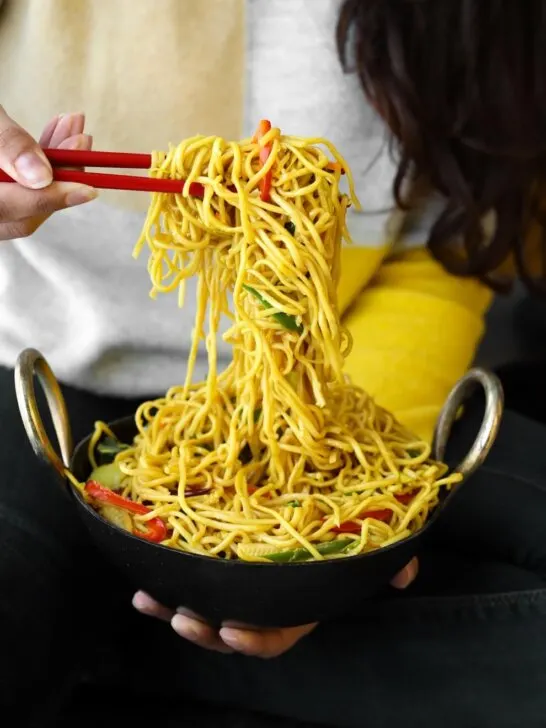
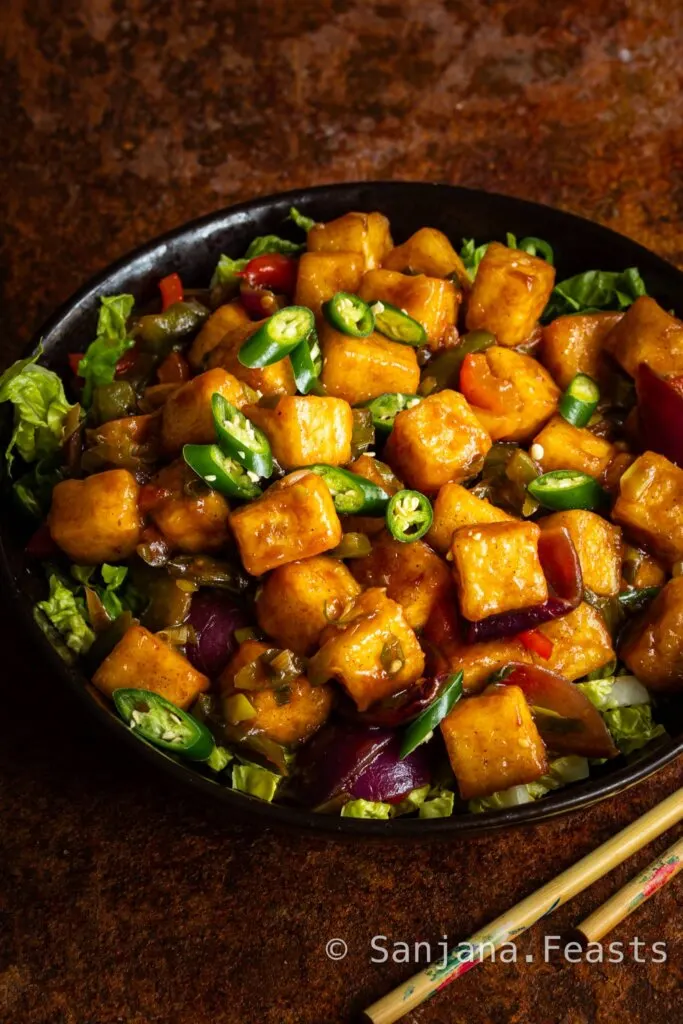
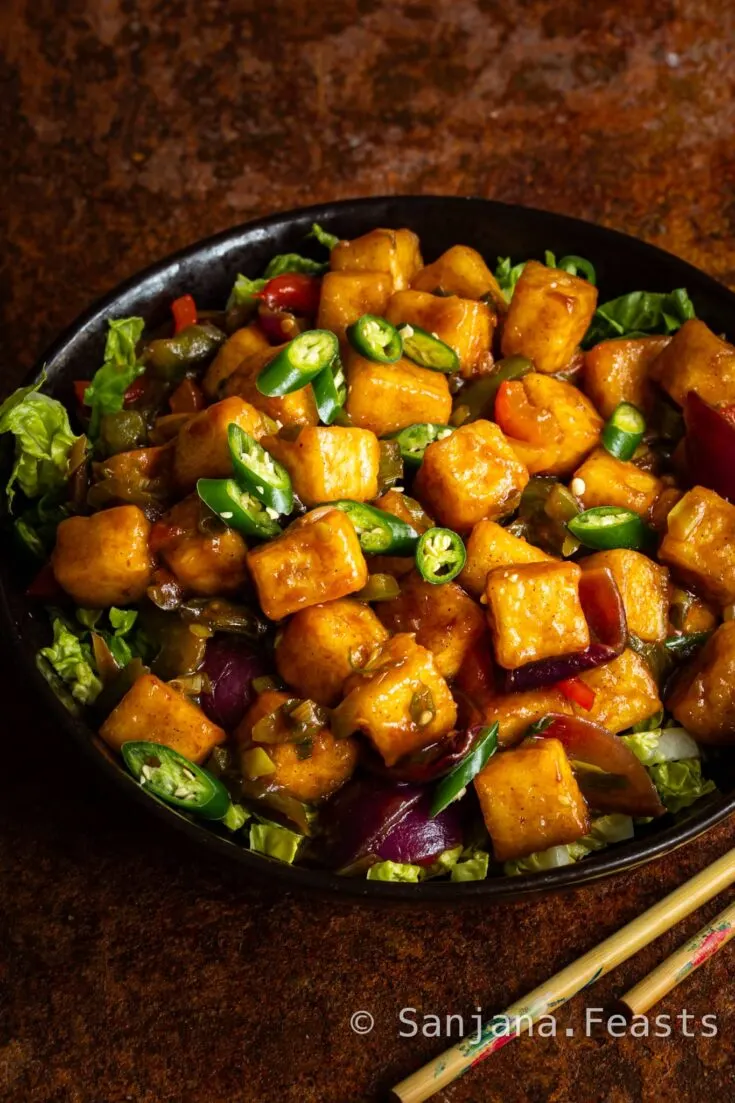


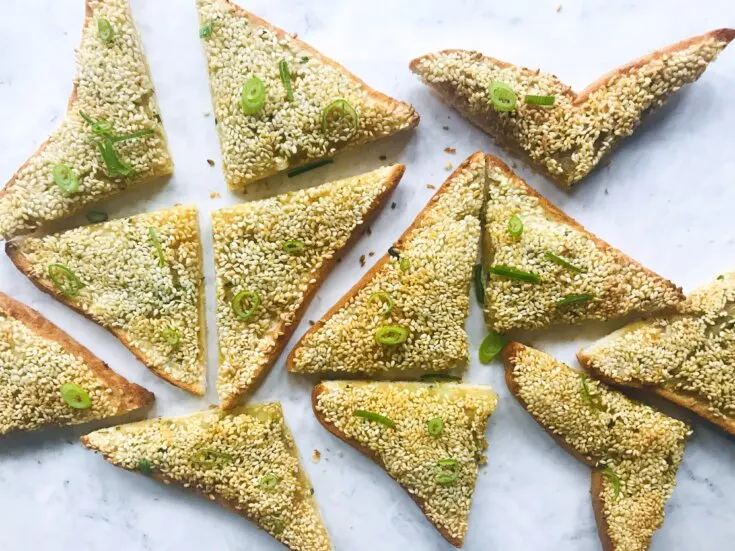

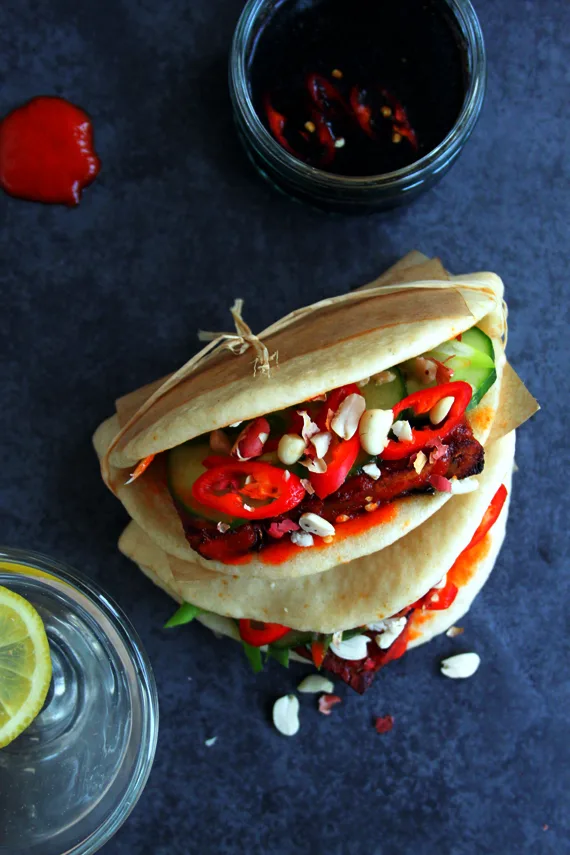

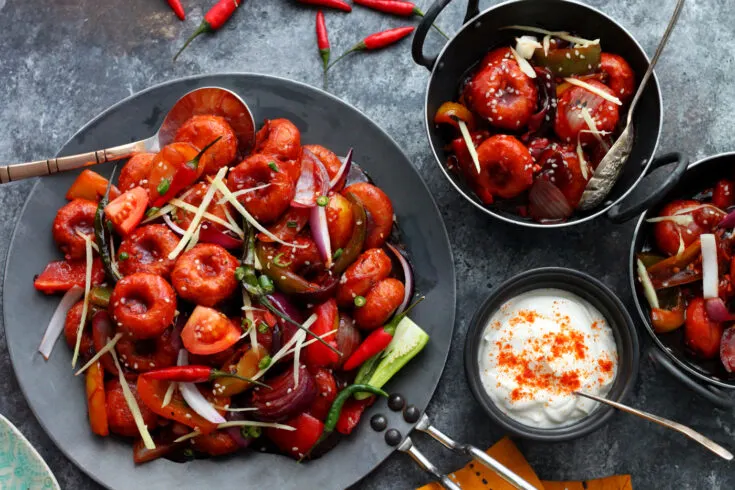
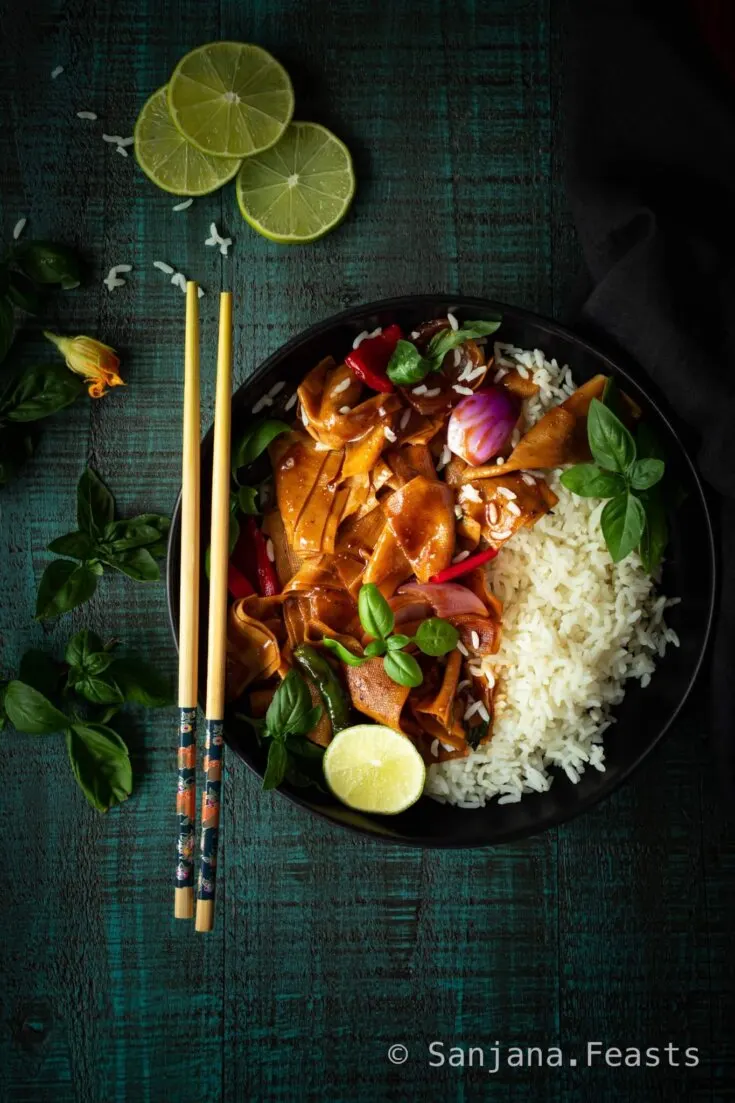

Quick Veg Meatball Manchurian - High Protein Indian Recipes - Sanjana Feasts
Saturday 21st of June 2025
[…] Like Hakka Noodles or Schezwan […]
Veg Manchurian Recipe - Indo-Chinese Recipes - Sanjana.Feasts
Friday 22nd of November 2024
[…] Manchurian is delicious with Hakka Noodles or Veg Fried […]
Crispy Chilli Pumpkin - Indo-Chinese Recipes - Sanjana.Feasts
Friday 18th of August 2023
[…] in every part of India, from street stalls selling momos, bao buns, schezwan (sic) fried rice and hakka noodles, restaurant menus famed for their honey chilli potatoes, gobi manchurian, and chilli […]
Restaurant-Style Chilli Paneer - Sanjana.Feasts - Indo-Chinese Recipes
Tuesday 28th of March 2023
[…] Paneer, Veg Manchurian, Hakka Noodles, Spring Rolls, Mixed Rice & Noodle Sizzler and even Szechuan Dosa. I ordered as much as I could […]
The Best Homemade Paneer - Sanjana.Feasts - Indian Cooking Basics
Monday 24th of May 2021
[…] golden crust. It’s also a delicious addition to Indo-Chinese favourites like Chilli Paneer, Hakka Noodles and Paneer […]